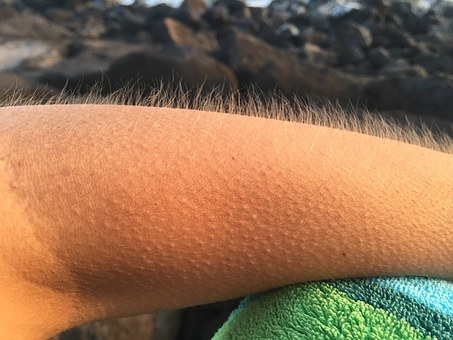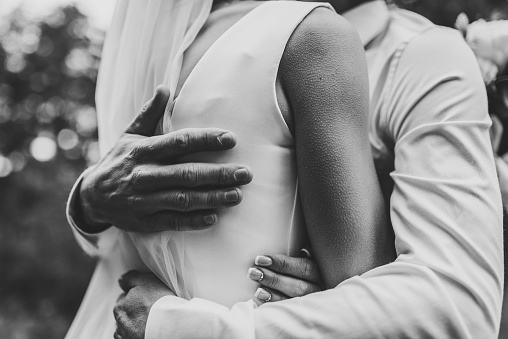Voluntary Piloerection
 pixabay
pixabay
Was having a regular day at the clinic... patients coming in with otomycosis and otitis media... just the regular, boring routine cases. Then came in a young guy, say 16 years old, with a complaint in his ear.
He was examined and a diagnosis was quickly and easily made and his prescription given. Then he said, "there's something I've been meaning to talk to a doctor about". Well, ofcourse, share your burden young man, then he said he could control his goosebumps.
I was taken aback, because, I mean, that's not possible, that isn't something we can control, it's an autonomic function. So ofcourse, I'd love to see that, and asked him to show us, and he brought out his arm and gradually, goosebumps appeared.
My mind was blown! Told him to take them back, and he did, then told him to bring them back, and he did! Told him to do it a couple more times, lol. It was maddening! I wanted to understand how that was possible, so I did some reading... well, let's find out what I found out.
Well, for starters, the condition is called Voluntary Piloerection or Voluntarily Controlled Piloerection(VCP). Piloerection is basically the big word meaning goosebumps. Piloerection is the physiological phenomenon or response to thrill or chill, meaning the natural body's response to cold or emotions.
The mechanism is a pull at the hair roots by miniscule muscles stimulated by adrenaline. Now, it should be noted that these muscles are smooth muscles and should have no voluntary control. Voluntary Piloerectors defy this rule and have good control over this phenomenon.
A research was done through Facebook and I'll be making a lot of reference to it. According to the study, the participants described it as a simple physical act, like raising a leg or nodding their heads. Others explained it as flexing a muscle in the brain... please note there are no muscles in the brain, some said it was controlled by tightening a muscle behind the ear while some said the mere thought of it was enough to yield results.
Interestingly, some were able to describe a pattern in which they perceived the movement of the goosebumps. The majority of participants described it to begin at the back of the neck then move gradually till it appeared on their arms.
Voluntary Piloerectors, despite having voluntary control over this autonomic function, do not lose the involuntary mechanism. In simpler words, they still respond to chill and thrill the same way every other person does, without thinking about it or putting in any effort.
Scientists believe goosebumps are an evolutionary trait to generate body heat in cold conditions and also an attempt to fight or scare away treats, as it also occurs in emotional states like fear. Picture a porcupine to help understand this fear angle.
Goosebumps could also be a good thing, especially when you're with that person that makes you smile no matter how much you try not to. Sometimes, just a simple touch, a kiss, could make you look like Sunday's turkey!
Piloerection as a result of pleasant sexual or positive emotional experiences like the climax of a movie or listening to music that's got you in your feelings has now been termed "Skin Orgasm". I like the name. These are all believed to be primal responses along the evolutionary tree. pixabay
pixabay
I think it's instresting that a significant number of participants all affirmed specific emotions after voluntarily initiating piloerection. As emotions could involuntarily result in piloerection, voluntary piloerection could also result in emotions? That's worth looking into.
According to the study, the participants had a personality trait in common, they tended to be rather open and expressive people, now I wonder if it's just coincidence or has an actual role to play.
He was examined and a diagnosis was quickly and easily made and his prescription given. Then he said, "there's something I've been meaning to talk to a doctor about". Well, ofcourse, share your burden young man, then he said he could control his goosebumps.
I was taken aback, because, I mean, that's not possible, that isn't something we can control, it's an autonomic function. So ofcourse, I'd love to see that, and asked him to show us, and he brought out his arm and gradually, goosebumps appeared.
My mind was blown! Told him to take them back, and he did, then told him to bring them back, and he did! Told him to do it a couple more times, lol. It was maddening! I wanted to understand how that was possible, so I did some reading... well, let's find out what I found out.
Well, for starters, the condition is called Voluntary Piloerection or Voluntarily Controlled Piloerection(VCP). Piloerection is basically the big word meaning goosebumps. Piloerection is the physiological phenomenon or response to thrill or chill, meaning the natural body's response to cold or emotions.
The mechanism is a pull at the hair roots by miniscule muscles stimulated by adrenaline. Now, it should be noted that these muscles are smooth muscles and should have no voluntary control. Voluntary Piloerectors defy this rule and have good control over this phenomenon.
A research was done through Facebook and I'll be making a lot of reference to it. According to the study, the participants described it as a simple physical act, like raising a leg or nodding their heads. Others explained it as flexing a muscle in the brain... please note there are no muscles in the brain, some said it was controlled by tightening a muscle behind the ear while some said the mere thought of it was enough to yield results.
Interestingly, some were able to describe a pattern in which they perceived the movement of the goosebumps. The majority of participants described it to begin at the back of the neck then move gradually till it appeared on their arms.
Voluntary Piloerectors, despite having voluntary control over this autonomic function, do not lose the involuntary mechanism. In simpler words, they still respond to chill and thrill the same way every other person does, without thinking about it or putting in any effort.
Scientists believe goosebumps are an evolutionary trait to generate body heat in cold conditions and also an attempt to fight or scare away treats, as it also occurs in emotional states like fear. Picture a porcupine to help understand this fear angle.
Goosebumps could also be a good thing, especially when you're with that person that makes you smile no matter how much you try not to. Sometimes, just a simple touch, a kiss, could make you look like Sunday's turkey!
Piloerection as a result of pleasant sexual or positive emotional experiences like the climax of a movie or listening to music that's got you in your feelings has now been termed "Skin Orgasm". I like the name. These are all believed to be primal responses along the evolutionary tree.
 pixabay
pixabayI think it's instresting that a significant number of participants all affirmed specific emotions after voluntarily initiating piloerection. As emotions could involuntarily result in piloerection, voluntary piloerection could also result in emotions? That's worth looking into.
According to the study, the participants had a personality trait in common, they tended to be rather open and expressive people, now I wonder if it's just coincidence or has an actual role to play.
Referencing
https://www.frontiersin.org/articles/10.3389/fnins.2020.00590/full
0
0
0.000
Interesting. I would be interested in knowing the statistics behind this ability. What percentage of the human population can do this? This is actually the first time I will be coming across such an ability. It must be quite rare.
My mind was blown! It is very rare! From the reference study, a number of people said they discovered the ability after coming across the study, so the statistics is extremely inadequate at the time. But it is extremely rare.
Thanks for your contribution to the STEMsocial community. Feel free to join us on discord to get to know the rest of us!
Please consider supporting our funding proposal, approving our witness (@stem.witness) or delegating to the @stemsocial account (for some ROI).
Please consider using the STEMsocial app app and including @stemsocial as a beneficiary to get a stronger support.
Congratulations @topdollar001! You have completed the following achievement on the Hive blockchain and have been rewarded with new badge(s) :
Your next target is to reach 2500 upvotes.
You can view your badges on your board and compare yourself to others in the Ranking
If you no longer want to receive notifications, reply to this comment with the word
STOP